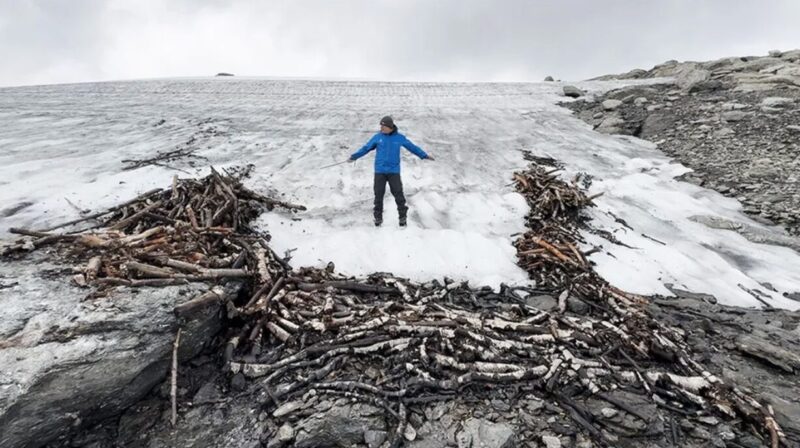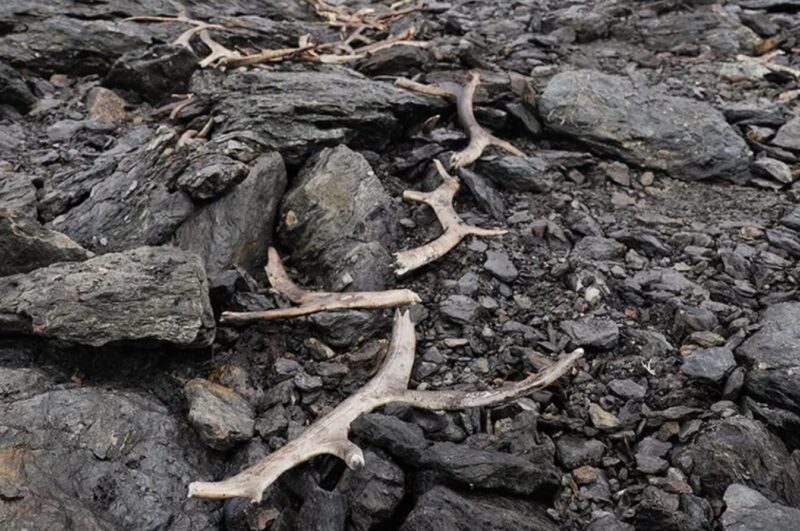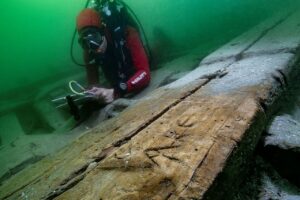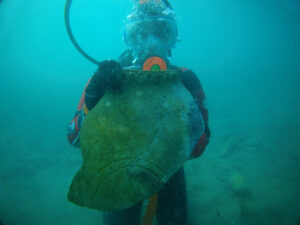High in the mountains of western Norway, researchers have uncovered a 1,500-year-old reindeer trap that was preserved beneath the ice for centuries, until recent melting exposed it.
In 2024, 76-year-old local hiker Helge Titland spotted some unusual wooden stakes protruding from a patch of melting snow on the Aurlandsfjellet plateau. He had already discovered several ancient hunting sites nearby and was certain this was a significant find.
Researchers from Vestland County Council and the University Museum of Bergen came this year and found the trap even more exposed by melting ice.
“We have never seen anything like this before,” said local archaeologist Oystein Skar. “It is completely unique.”

Photo: Thomas Bruen Olsen/University Museum of Bergen
Ancient corral
Hundreds of logs and branches are arranged in two long rows, creating a funnel-like guiding fence that converges into a large enclosure. Here, hunters could capture or kill the reindeer. Archaeologists believe that this mass-capture corral dates back to the mid-sixth century, at the end of the early Iron Age.
It is the only ancient wooden facility of its kind ever found in Norway and possibly Europe. The ice that imprisoned it for hundreds of years helped to preserve it. The team believes that snow and ice buried the structure soon after it was abandoned.
Nearby, archaeologists have found hundreds of reindeer antlers, many with cut marks across them. There were also iron spearheads, bits of arrows and bows, and several carved wooden items.
The discovery “gives insight into the importance reindeer hunting may have had…We now suspect that wild reindeer hunting played an even greater role [in the early Iron Age] than earlier believed,” Leif Inge Astveit, an archaeologist at the University Museum of Bergen, told the Norwegian Broadcasting Corporation.

An iron spearhead from the site. Photo: Thomas Bruen Olsen/University Museum of Bergen
One of the most puzzling finds at the site, which sits at 1,400m, is a richly decorated wooden oar. “What these were used for, and why they were brought into the mountains 1,500 years ago, is still a mystery,” said Skar.
Though melting ice revealed these extraordinary objects, its disappearance also makes them vulnerable to rapid decay. All items are kept frozen at the University Museum of Bergen, allowing them to be slowly thawed and dried to prevent further damage.






